The ZTE Axon 30 Ultra Review - Something Surprisingly Different
by Andrei Frumusanu on July 30, 2021 8:00 AM EST- Posted in
- Mobile
- Smartphones
- ZTE
- Axon 30 Ultra
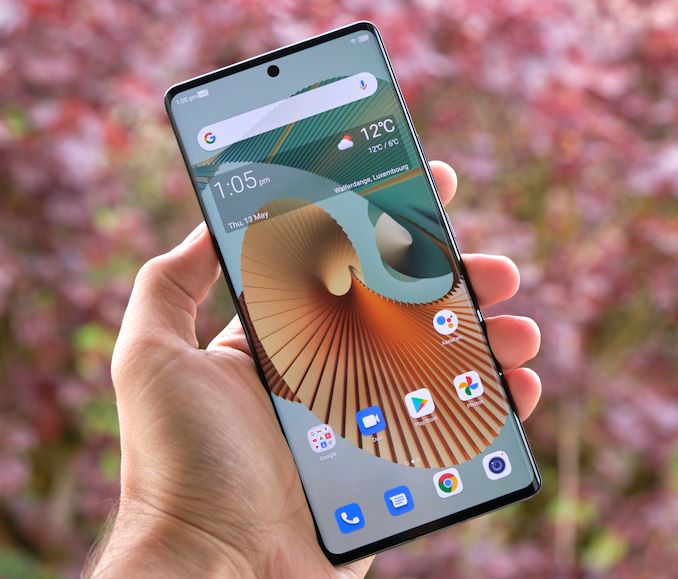
Today, we’re taking a closer look at a somewhat particular device, the new ZTE Axon 30 Ultra. The phone had been launched in the US back in early June, a fact that is alone somewhat remarkable for the relatively more restrictive North American market. While ZTE over the last few years had taken a more subdued position in the mobile market, in particular having a large set-back with US regulators back in 2018, this year it seems the company is back on track and providing products as interesting as ever.
The Axon 30 Ultra is quite a departure from past ZTE devices: particularly on the product positioning, design, and features of the phone. Featuring a new flagship Snapdragon 888 chip, it’s a larger step-up from the premium range Axon 20 5G. Featuring the “Ultra” denomination ZTE here is also trying to mimic the Samsung flagship device naming, although while the Axon 30 Ultra doesn’t really feature every single specification deemed worthy of an “Ultra” name, it also comes at a vastly more reduced price point of $749 – a price point that is particularly more interesting for US readers given the sheer lack of alternatives in the market.
| ZTE Axon 30 Ultra | |||
| Axon 30 Ultra | |||
| SoC | Qualcomm Snapdragon 888 1x Cortex-X1 @ 2.84GHz 3x Cortex-A78 @ 2.42GHz 4x Cortex-A55 @ 1.80GHz Adreno 660 @ 840MHz |
||
| DRAM | 8/12 GB LPDDR5 | ||
| Storage | 128/256GB UFS 3.1 | ||
| Display | 6.67" AMOLED 2400 x 1080 (20:9) 144Hz 300Hz Touch |
||
| Size | Height | 161.53 mm | |
| Width | 72.96 mm | ||
| Depth | 8.0 mm | ||
| Weight | 188 grams | ||
| Battery Capacity | 4600mAh 65W charging (PD3.0) |
||
| Wireless Charging | - | ||
| Rear Cameras | |||
| Wide | 64MP IMX686 0.8µm pixels (1.6µm 4:1 16MP) f/1.6 w/OIS 26mm eq. |
||
| Main | 64MP GW3 0.7µm pixels (1.4µm 4:1 16MP) f/1.9 35mm eq. |
||
| Ultra-wide | 64MP GW3 0.7µm pixels (1.4µm 4:1 16MP) f/2.2 13mm eq. |
||
| Telephoto | 8MP f/3.4 w/OIS (Periscope design) 120mm eq. |
||
| Front Camera | 16MP f/2.5 |
||
| I/O | USB-C 3.1 | ||
| Wireless (local) | 802.11ax WiFi-6E Bluetooth 5.2 LE + NFC |
||
| Other Features | Dual Speakers Under-screen optical fingerprint sensor |
||
| Dual-SIM | Dual nanoSIM | ||
| Launch Price | 8GB+128GB: $749 / £649 / €749 12GB+256GB: $849 / £739 / €849 |
||
In terms of specifications, the Axon 30 Ultra features Qualcomm’s Snapdragon 888 which puts the phone in the top-performing flagship category, and we expect the device to largely perform the same as many of the other alternatives in the market. It comes with either 8 or 12GB of LPDDR5 RAM and either 128GB or 256GB of UFS 3.1 storage options – there is no expandable storage available.
The display of the Axon 30 Ultra is both high-performance, but also not quite top of the line as we’ve seen from other vendors. ZTE chose to remain with a lower 2400 x 1080 resolution with the 6.67” display – which is a step below that of other 1440p alternatives such as from Samsung, Xiaomi or OnePlus/OPPO. ZTE however does include high refresh rate and manages to push things up to 144Hz, along with a 300Hz touch sampling rate. It’s somewhat of a similar approach ASUS takes on the ROG phones, and the lower resolution will be more efficient given that it doesn’t feature any newer advanced display technologies.
At 6.67” and a body footprint of 161.5 x 72.96mm, the Axon 30 Ultra is considerably smaller than other “Ultra” phones in the market, and actually fits within what I consider myself a sweet-spot between large screen and still good one-handed device handling.
The phone actually still features a 4600mAh battery which is just a little less than other big phones, however ZTE managed to keep the weight down at a reasonable 188g, again something that I really appreciate and is immediately noticeable when coming from other contemporary phones.
The phone features both curved front display glass as well as a curved back glass which makes for very good ergonomics and the phone feels smaller than it is because of it. It’s still a very “edgy” phone in that the metal frame sticks out a bit on the sides of the phone, and the top and bottom faces are flat – it’s a design aspect that sometimes works and sometimes doesn’t, but in this case, I think it was well implemented and gives the phone a better solid grip.
| ZTE Axon 30 Ultra Cameras | |||||||||
| Optics | Sensor | ||||||||
| 35mm eq. FL |
FoV (H/V/D) |
Aperture | OIS | Resolution | Pixel Pitch |
Pixel Res. |
Sensor Size |
||
| Ultra-Wide | 13.85 | 102.6° 86.4° 114.8° |
f/2.2 | ✗ | 64.2M native (9248 x 6944) 16.0M binned (4624 x 3472) |
0.7µm 1.4µm |
40.0″ 79.9″ |
1 / 1.98" 6.47mm x 4.86mm 31.46mm² |
|
| Main (Wide) | 26.11 | 67.1° 52.9° 79.3° |
f/1.6 | ✓ | 64.2M native (9248 x 6944) 16.0M binned (4624 x 3472) |
0.8µm 1.6µm |
26.1″ 52.2″ |
1 / 1.73" 7.39mm x 5.55mm 41.09mm² |
|
| 2nd Main | 31.45 | 57.7° 44.9° 69.1° |
f/1.9 | ✗ | 64.2M native (9248 x 6944) 16.0M binned (4624 x 3472) |
0.7µm 1.4µm |
22.4″ 44.9″ |
1 / 1.98" 6.47mm x 4.86mm 31.46mm² |
|
| 2nd Telephoto | 123.1 | 16.01° 12.04° 19.94° |
f/4.9 | ✓ | 7.99M native (3264 x 2448) 16.0M scaled (4624 x 3472) |
1.0µm | 17.7″ | 1 / 3.92" 3.26mm x 2.44mm 7.99mm² |
|
The camera setup on the Axon 30 Ultra quite interesting, with a unique camera setup: the ultra-wide, main (wide), and a S21-like secondary wide-angle unit featuring all 64MP sensor, alongside a small periscope telephoto module.
The ultra-wide and the secondary wide-angle feature 64.2MP quad-Bayer sensors that bin down to 16MP in regular shots. These are 0.7µm pixels and thus the sensors aren’t actually that large in terms of their 1/1.98” formats, and we’d generally want to keep them in their binned down mode most of the time. The ultra-wide has 13.85mm eq. optics with f/2.2, while the secondary wide has 31.45mm eq. f/1.9 optics. The latter is quite unusual – it’s similar to the S21’s secondary, but due to the quad-Bayer setup and the lack of OIS, isn’t quite as useful. ZTE calls this a portrait lens, though it’s a quite shorter focal length than what we’re used to for portrait photography.
The main camera is also 64.2MP, though this is a larger sensor with 0.8µm pixels and a 1/1.73” format. It still bins down to 16MP for regular shots, and features OIS with 26.11mm eq. optics with f/1.6 aperture.
Finally, the telephoto module is a tiny 8MP sensor with 1.0µm pixels. As a 1/3.92” format as only 7.99mm² area it’s quite small, but the optics have a long 123.1mm focal length, although the aperture is also dark at f/4.9.
Usually we see vendors employ “dummy” sensors in order to bloat up their camera module count, but here ZTE does employ four functional modules, and that second wide-angle module is definitely interesting in what it tries to achieve.
Generally, the ZTE Axon 30 Ultra comes with excellent build quality that’s exceptionally solid and premium feeling, along with a design that, while not out of the ordinary, is very ergonomic and works well for the phone. Generally it’s also the “smaller” form-factor which makes the device stand out, being a more reasonable 73mm width along with being lighter than the competition.


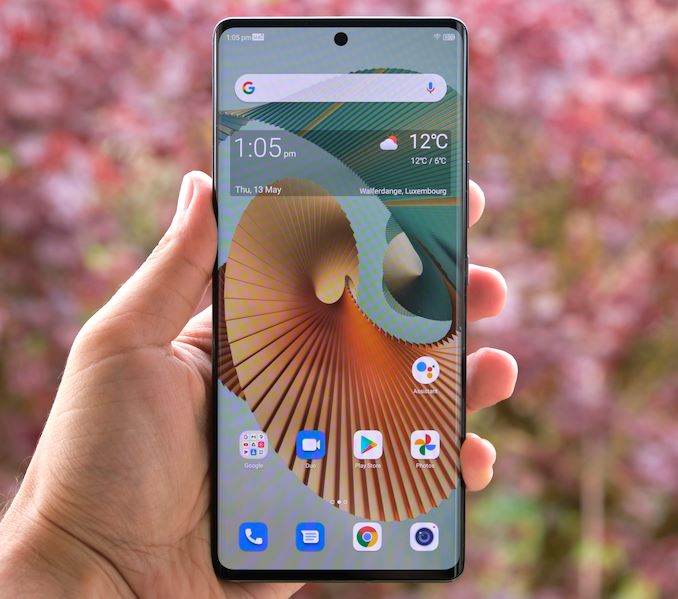
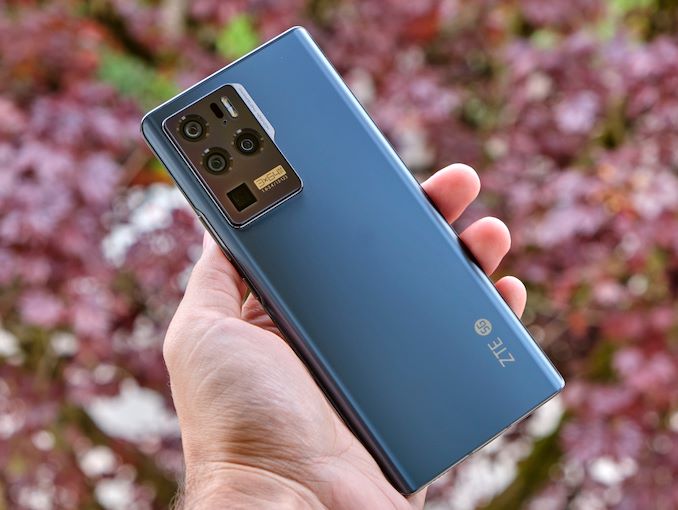
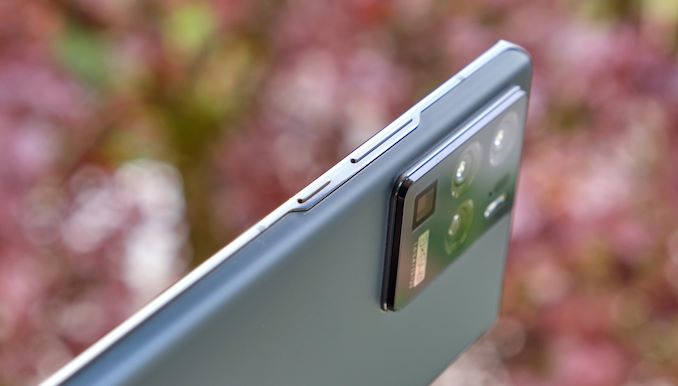

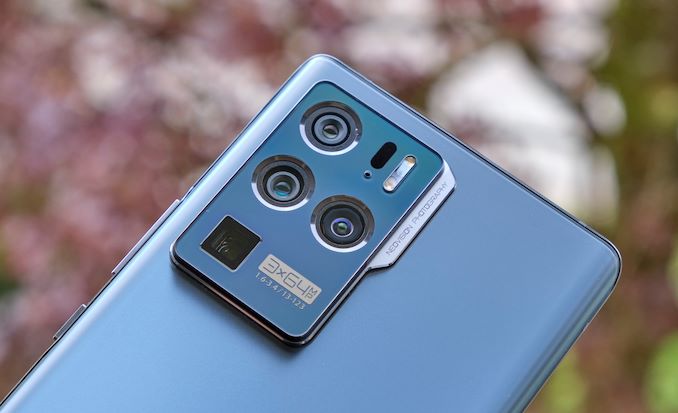








25 Comments
View All Comments
warisz00r - Friday, July 30, 2021 - link
"somewhat particular device"coburn_c - Saturday, July 31, 2021 - link
From across the specific ocean.dotjaz - Friday, July 30, 2021 - link
"Surprisingly Different"And unsurprisingly lacking on software support.
Seriously, it probably cost an extra $100000 to offer one more update and one extra year of security. That's maybe $1 per phone. Just charge the extra dollar or five.
sabot00 - Friday, July 30, 2021 - link
No way. An extra year of support is easily 5-10 million USD. Even if dev work was free, the cost of carrier certification is huge.linuxgeex - Friday, July 30, 2021 - link
Except that with project treble all the components which are involved in carrier certification do not change with security updates. Carrier re-certification revolves around the baseband, which rarely changed even before project treble.jvl - Saturday, July 31, 2021 - link
So charge 5 USD more. Or 10 USD more. Which is exactly what OP proposed.. (Nonwithstanding below's comment)Samus - Sunday, August 1, 2021 - link
Agreed. If PR honestly pitched these things with guaranteed software support for 3-4 years I don't think an extra $5-$10 would phase anybody, especially since nobody (other than Apple I suppose) does that.Silver5urfer - Friday, July 30, 2021 - link
Why should anyone buy this device which has literally same lack of feature set from HW perspective = no 3.5mm jack, no SD card slot, questionable servicing support and OS support. For that cash I'd get a Sony Xperia 5 Mark III. Which has everything this phone lacks and even better Front display due to no hole or such.neothe0ne - Friday, July 30, 2021 - link
Agreed. Xperia 5 III is also likely to end up being supported on AT&T's network from February 2022 onward. I don't see any ZTE Axon on the list so far.https://www.att.com/idpassets/images/support/wirel...
drajitshnew - Friday, July 30, 2021 - link
@silversurfer I absolutely agree about microSD cards and 3.5mm Jack. I bought my currently phone because it had a flagship-eque chipset and 3.5mm Jack support.I thought that 256GB flash would alleviate the need for micro SD. As I described above though it required a factor reset and 2 (two) complete re-imaging. And I think it be would have been a LOT less painful if it had a microSD. At the same time I guess we as consumers have to accept